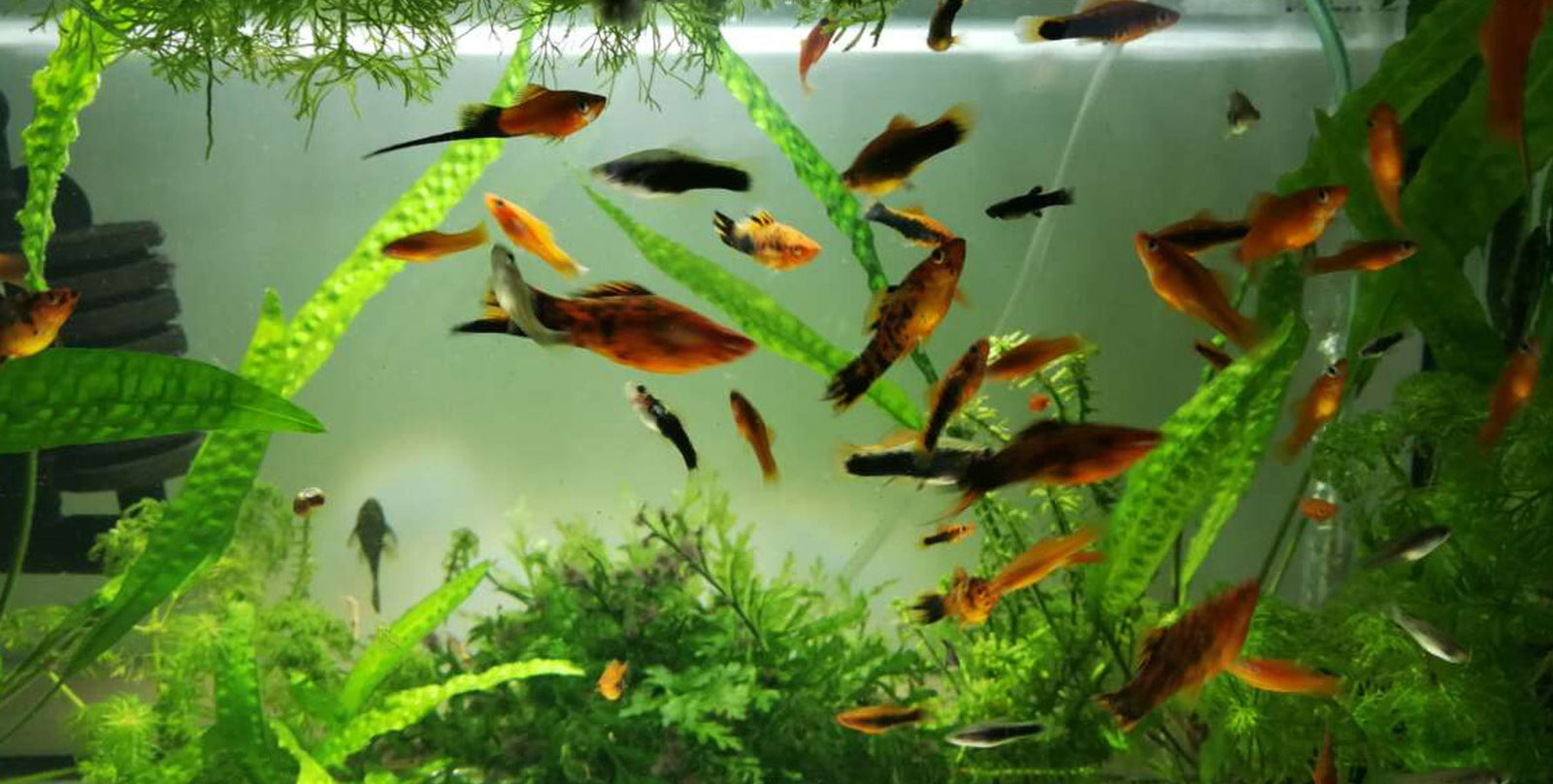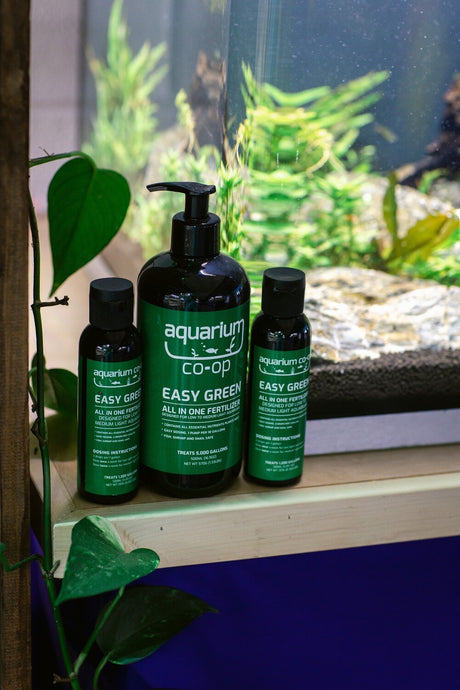All of them! Just kidding. The more test kits you have the better prepared you’ll be, but it’s not necessary to have every test out there. What we’ll do here is tell you which ones we think are the most important, and why you might want to get them.
THE MOST IMPORTANT
Ammonia is the product of fish waste and is the first thing you’ll get in a newly set up aquarium. It’s highly toxic, and it’s important you keep the levels to an absolute minimum until your aquarium is cycled (and then it will go away on its own). Ammonia should be tested weekly.
Nitrite is what is created when beneficial bacteria breaks down ammonia. Nitrite exists in an almost-cycled aquarium, and it’s just as toxic to fish as ammonia is. This is something you want to test for weekly, and with a new aquarium, it is an essential test.
Nitrate is the one thing you want to see when you’re testing your aquarium. With ammonia and nitrite, you’re hoping to see a big fat zero, with nitrate you’re hoping for a reading of 10-20. It can still be toxic to fish in high doses, but a small amount is totally normal, and a sign of a healthy cycled aquarium. You should also test nitrate weekly.
THE PRETTY DARN IMPORTANT
pH is the acidity of the water. Every body of water in the world has a slightly different pH, and the fish that are naturally found there are acclimated to that and do best in a similar range in the home aquarium. Despite this, there is a rule in the aquatics world that says “don’t chase pH.” This doesn’t mean ignore pH, it means choose fish that are suitable for your local water supply, or find a stable way to change it. We’ll go through how to change your pH safely in another article, but for now, feel free to ask us if you have questions! The reason this isn’t a “most important” test is that you can often find information about your local water by reaching out to city officials. Here in the lower mainland, where April’s Aquarium is from, the pH of our water is quite acidic–6,4-6.8.
KH, or carbonate hardness, directly affects the pH of your aquarium. It is the measure of carbonates and bicarbonates dissolved into the water. When the water has a low carbonate hardness (as is the case in the Vancouver area) the pH shifts more easily; a high KH provides a really valuable ‘buffering” capacity. Also, most fish prefer “hard” or “soft” water, and this is one of two important tests for that–the other is GH. With high values, you have hard water. With low values, you have soft water.
GH is the measure of salts like magnesium and calcium in the water, and it is the other test (besides KH) to tell you about the hardness of your water. Calcium is very important for invertebrates (growing shells and exoskeletons) and magnesium is very important for your plants. There are many other factors, but having the right GH or “hardness” of water is very important for many living things, and this is a great test to keep on hand.
THE NICE-TO-HAVES
Phosphate at increased levels can contribute to algae blooms and other issues, but it’s also something that plants need to thrive. If you have a planted aquarium, a phosphate test can be an invaluable tool to decide how much fertilizer to dose.
Calcium is a piece of GH, and it is required by all invertebrates. As invertebrates or plants absorb calcium, the calcium level is reduced (another reason for frequent water changes!). Excess phosphate can also reduce the amount of calcium in your aquarium.
Magnesium combines with calcium and other minerals to form GH or water hardness; a magnesium test will tell you more about the hardness of your aquarium. Magnesium is a very important mineral for live plants, and it’s included in most fertilizers.
Copper is not something you want to see much of in your home aquarium, as it’s highly toxic to invertebrates and to some species of fish. It does have some benefits though, and it is frequently used in fish medications. The combination of water with a low pH and copper pipes in the water system can cause copper levels in an aquarium to raise. It’s great to have a copper test on hand to ensure your levels are minimal, especially after a run of medication with copper. There are products that can assist you and absorb the copper before it causes problems.
Iron is a fantastic fertilizer for plants and will help give red-leaved plants a deep colourful boost. That said, too much iron can be harmful to your fish. You can ensure you aren’t overdosing fertilizers, but it’s always a great idea to test your water periodically and ensure your levels are at a reasonable amount.
Chlorine is a nice-to-have test because it’s rarely ever an issue, and it’s an easy fix if it is (dose water conditioner ASAP). That said, it does have its uses. For more delicate plants or fish, it’s great to know exactly how much chlorine is in the water. By knowing exact amounts, you can use the minimum amount of conditioner (which also removes some minerals and metals). You can also use this test kit to test new water before adding it to your aquarium, ensuring there isn’t any chlorine remaining. It’s also helpful when diagnosing issues health issues, as it can help you rule out chlorine toxicity as a cause.
CONCLUSION
All tests can be useful, and tell you a bit more about your aquarium, but it’s up to you how many you really need. We have a good number of these tests available at April’s Aquarium, so just ask if there’s something you’re looking for, and we’ll help you out.


